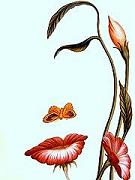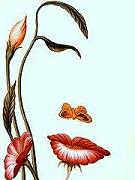|
Breathe
The first thing you did when you came into this world was to inspire, that is, to breathe in. The last thing you will do will be to expire, that is, to breathe out. And between your first inspiration and your last expiration there will have been the process of respiration, that is, breathing in and out at an average rate of twenty times a minute. Twenty times a minute means twelve hundred times an hour, or nearly thirty thousand times a day, or over ten million times a year. If you should live to be fifty years old, you will have breathed in and out over five hundred million times. We eat three times a day, twenty-one times a week, over a thousand times a year, fifty thousand times in fifty years, but we breathe over five hundred million times in fifty years. We realize the importance of eating, but we can live days without food. On the other hand, we cannot live many seconds entirely without air. We must infer from all this that breathing is more important than eating. How can it be? From our food our body is rebuilt. What life-process is accomplished by breathing? To understand this, we must learn what processes are going on in the body, by means of which food is converted into tissue, into heat and energy. These processes we find are chemical, and may be likened to the combustion of wood or coal in the furnace. We know that fire must have air in order to burn. Burning is the process of oxidation or combustion of oxygen with the atoms of fuel and the formation of a new substance thereby. Coal, we are told, consists of carbon and nitrogen, both of which readily combine with oxygen, and in the process of uniting heat is liberated, and waste compounds thus formed pass off through the smokestack or chimney. We may not understand this scientifically, but we know that if we want the fire to burn well we must give it draft or air. Our bodies are living engines, and use food and air instead of coal and air. Food in the body without air is like the coal in an engine without air; and air is useful only because it brings oxygen to unite chemically with the food. This process is going on all over the body. Each little microscopical cell is a furnace in which oxidation is taking place; and not only is energy liberated, but reconstructive processes are going on, new tissues are being formed, and old tissues removed. But how can the oxygen get to the cells in all parts of the body? We can readily see how it gets to the air-cells of the lungs, but it would do little good if it stopped there. It must be carried in some way to all the minutest cells of all the tissues. This is done through the breathing.
The blood goes to the lungs, and there it gives out the waste material it has collected in its journey through the body and takes up oxygen. The blood goes to the lungs dark in color from its load of waste. It is changed to a bright red by taking up oxygen. Each red blood-corpuscle takes a load of oxygen, carries it to its destination, and gives it to some tissue to be used up in the chemical process of oxidation, upon which depends our life and energy. During the hours of rest the tissues are busy in this process, and during exercise the energy stored up in the tissue-cells is liberated and waste created. So we see that the process is a continual round of taking food and air, using them in rebuilding tissue, then using up the tissue by exercise and casting out the waste products. And now we can begin to understand that we live in proportion as we breathe. Dr. Holbrook says: "The activity of the child is in close relation to the strength of its lungs; so, too, is the calmness, dignity and power of a man in proportion to the depth and tranquility of his respiration. If the lungs are strong and active, there is courage and boldness; if feeble, there is cowardice and debility. To be out of spirits is to be out of breath. To be animated and joyous is to be full of breath." "Breathing," writes Dr. von der Deeken, "is an actual vivifying act, and the need of breath as felt is a real life-hunger and a proof that without the continual charging of the blood-column with the proper force, all the other vital organs would soon stagnate and cease action altogether." Now I wonder how many young women really know how to breathe. "Why," you say, "we have always breathed!" And I reply, "So you have, to some extent; but do you really breathe, or do you just let a little current of air flow gently through a part of your lungs, not reaching the minute air-cells at all, or have you crippled a large part of your lung-power by the restrictions of tight clothing?" Now you shrug your shoulders and say, with a little irritation, perhaps, "O, now she is going to scold about corsets and tight-lacing, and I do not wear my clothes tight." But I am not now going to talk of lacing; I am going to talk about singing, and speaking, and real living. The highest class of living creatures are those that have most power to breathe. The cold-blooded animals breathe little, and are slow-moving creatures with deficient sensation and small powers of action. Man has large lung-capacity and should be full of life and power, and will be, if he understands himself. One benefit of exercise is the added impulse given to the heart and lungs, calling for more breath, and bringing more blood to the lungs to receive the added supply of oxygen. If we were wise we would practise the art of deep, voluntary breathing, as a daily form of gymnastics. What would it do for us? Wonderful things, if we may believe the doctors. Even in the old Greek and Roman times the doctors recommended deep breathing, the voluntary holding of air in the lungs, believing that this exercise cleansed the system of impurities and gave strength. And all our scientific discoverers have proven that they were right, and modern doctors have only learned more of the process and added to the wisdom of the ancients. Professor Lehwess says that he uses deep breathing not only as a health remedy but as a cure for muscular convulsions, especially chronic spasms; and he says that he bases his method for the cure of stuttering mainly upon respiratory and vocal exercises, "whereby," he says, "we work on enervated muscles, and make their function bring them into permanent activity and make them obedient to our will." Thus not only will the respiratory system be enlarged and quickened, and the lungs strengthened, but the blood circulation is promoted and those injurious influences overcome which often take away the stutterer's courage for speaking.
Dr. Niemeyer, of Leipzig, urges breathing in these words: "Prize air; use good, pure air; breathe fresh air in your room by night and day." Dr. Bicking says that respiratory gymnastics are the only effectual remedy for pulmonary affection, especially for consumption. The Marquise Ciccolina claims that by the teaching of breathing gymnastics she has cured people of a tendency to take cold easily; she has benefited cases of lung and heart trouble, and she has cured nervous asthma even in cases that have lasted from childhood to maturity. Dr. Kitchen asserts that if the various structures of the body, including the lungs, are in a sufficiently healthy state, consumption cannot find a soil in which to commence its ravages, or, if already commenced, can be cured by attention to the general health, by pure air and deep breathing. All this proves that the breathing is of great importance — of just as much importance to women as to men. It used to be thought that women breathe naturally with the upper part of the chest and men with the abdominal muscles, but we have now learned that in the breathing of both men and women the diaphragm should be used and the lower part of the chest expanded. The breathing should neither be thoracic — that is, with the upper part of the chest — nor abdominal. It should be diaphragmatic; that is, with the expansion of the sides of the lower part of the chest, thus filling every air-cell and bringing the life-giving oxygen to the blood. The importance of the diaphragm as the breathing muscle cannot be overestimated. A diaphragm, you know, is a partition across a cylinder; the diaphragm is a muscular partition across the cylinder of the body, dividing the lungs from the abdomen. In breathing, the diaphragm becomes tense, and in becoming tense becomes also flattened, just as an umbrella does by being opened. In fact the opening and shutting of an umbrella gives a very good idea of the motion of the diaphragm in breathing. We can realize, then, how much larger around the body will be when the lungs are fully inflated than it is when we breathe the air out and the lungs are empty. A few minutes spent each day in exercising in diaphragmatic breathing would be of great advantage in increasing beauty of form, in giving strength and power to the voice, in improving the complexion and adding to the health, and therefore to the happiness. In taking these exercises, one should either stand erect or lie flat upon the back and draw the air in through the nose, keeping the mouth closed. Draw in gently, allowing the chest to expand at the sides, hold the air for a little time, and then breathe out slowly. These exercises performed in a room that is well ventilated, or, better still, in the pure air of outdoors, will do much toward driving away headaches, clearing the brain, giving better judgment, stronger will, and a clearer, happier, brighter disposition. Title: What a Young Woman Ought to Know Author: Mary Wood-Allen
Breathe while return to Next Breath and click here
|






